Fast Image Reconstruction Technique for Parallel Phase-Shifting Digital Holography
Abstract
:1. Introduction
2. Theory
3. Experiments
4. Discussion
5. Conclusions
Author Contributions
Funding
Conflicts of Interest
References
- Nehmetallah, G.; Banerjee, P.P. Applications of digital and analog holography in three-dimensional imaging. Adv. Opt. Photonics 2012, 4, 472–553. [Google Scholar] [CrossRef]
- Schilling, B.; Poon, T. Three-dimensional holographic fluorescence microscopy. Opt. Lett. 1997, 22, 1506–1508. [Google Scholar] [CrossRef] [Green Version]
- Rosen, J.; Brooker, G. Digital spatially incoherent Fresnel holography. Opt. Lett. 2007, 32, 912–914. [Google Scholar] [CrossRef] [PubMed]
- Rosen, J.; Brooker, G. Non-scanning motionless fluorescence three-dimensional holographic microscopy. Nat. Photonics 2008, 2, 190–195. [Google Scholar] [CrossRef]
- Brooker, G.; Sigel, N.; Wang, V.; Rosen, J. Optimal resolution in Fresnel incoherent correlation holographic fluorescence microscopy. Opt. Express 2011, 19, 5047–5062. [Google Scholar] [CrossRef] [PubMed] [Green Version]
- Rosen, J.; Sigel, N.; Brooker, G. Theoretical and experimental demonstration of resolution beyond the Rayleigh limit by FINCH fluorescence microscopic imaging. Opt. Express 2011, 19, 26249–26268. [Google Scholar] [CrossRef]
- Siegel, N.; Lupashin, V.; Storrie, B.; Brooker, G. High-magnification super-resolution FINCH microscopy using birefringent crystal lens interferometers. Nat. Photonics 2016, 10, 802–808. [Google Scholar] [CrossRef] [Green Version]
- Jang, C.; Kim, J.; Clark, D.C.; Lee, S.; Lee, B.; Kim, M.K. Holographic fluorescence microscopy with incoherent digital holographic adaptive optics. J. Biomed. Opt. 2015, 20, 111204. [Google Scholar] [CrossRef] [PubMed]
- Kim, M.K. Adaptive optics by incoherent digital holography. Opt. Lett. 2012, 37, 2694–2696. [Google Scholar] [CrossRef]
- Kim, M.K. Full color natural light holographic camera. Opt. Express 2013, 21, 9636–9642. [Google Scholar] [CrossRef]
- Wan, Y.; Man, T.; Wang, D. Incoherent off-axis Fourier triangular color holography. Opt. Express 2014, 22, 8565–8573. [Google Scholar] [CrossRef]
- Imbe, M. Radiometric temperature measurement by incoherent digital holography. Appl. Opt. 2018, 58, A82–A89. [Google Scholar] [CrossRef] [PubMed]
- Yamaguchi, I.; Zhang, T. Phase-shifting digital holography. Opt. Lett. 1997, 22, 1268–1270. [Google Scholar] [CrossRef] [PubMed]
- Takaki, Y.; Kawai, H.; Ohzu, H. Hybrid holographic microscopy free of conjugate and zero-order images. Appl. Opt. 1999, 38, 4990–4996. [Google Scholar] [CrossRef]
- Awatsuji, Y.; Sasada, M.; Kubota, T. Parallel quasi-phase-shifting digital holography. Appl. Phys. Lett. 2004, 85, 1069–1071. [Google Scholar] [CrossRef]
- Awatsuji, Y.; Tahara, T.; Kaneko, A.; Koyama, T.; Nishio, K.; Ura, S.; Kubota, T.; Matoba, O. Parallel two-step phase-shifting digital holography. Appl. Opt. 2008, 47, D183–D189. [Google Scholar] [CrossRef]
- Millerd, J.; Brock, N.; Hayes, J.; Morris, M.; Novak, M.; Wyant, J. Pixelated Phase-Mask Dynamic Interferometer. Proc. SPIE 2004, 5531, 304–314. [Google Scholar]
- Sony Semiconductor Solutions Corporation. Available online: https://www.sony-semicon.co.jp/e/products/IS/industry/technology/polarization.html (accessed on 24 August 2021).
- Tahara, T.; Kanno, T.; Arai, Y.; Ozawa, T. Single-shot phase-shifting incoherent digital holography. J. Opt. 2017, 19, 065705. [Google Scholar] [CrossRef]
- Choi, K.; Joo, K.; Lee, T.; Kim, H.; Yim, J.; Do, H.; Min, S. Compact self-interference incoherent digital holographic camera system with real-time operation. Opt. Express 2019, 4, 4818–4833. [Google Scholar] [CrossRef] [PubMed]
- Siegel, N.; Brooker, G. Single shot holographic super-resolution microscopy. Opt. Express 2021, 29, 15953–15958. [Google Scholar] [CrossRef]
- Kakue, T.; Itoh, S.; Xia, P.; Tahara, T.; Awatsuji, Y.; Nishio, K.; Ura, S.; Kubota, T.; Matoba, O. Single-shot femtosecond-pulsed phase-shifting digital holography. Opt. Express 2012, 20, 20286–20291. [Google Scholar] [CrossRef] [PubMed]
- Kakue, T.; Endo, Y.; Nishitsuji, T.; Shimobaba, T.; Masuda, N.; Ito, T. Digital holographic high-speed 3D imaging for the vibrometry of fast-occurring phenomena. Sci. Rep. 2017, 7, 10413. [Google Scholar] [CrossRef] [PubMed] [Green Version]
- Takase, Y.; Shimizu, K.; Machida, S.; Inoue, T.; Nishio, K.; Rajput, S.; Matoba, O.; Xia, P.; Awatsuji, Y. High-speed imaging of the sound field by parallel phase-shifting digital holography. Appl. Opt. 2021, 60, A179–A187. [Google Scholar] [CrossRef]
- Tahara, T.; Yonesaka, R.; Yamamoto, S.; Kakue, T.; Xia, P.; Awatsuji, Y.; Nishio, K.; Ura, S.; Kubota, T.; Matoba, O. High-speed three-dimensional microscope for dynamically moving biological objects based on parallel phase-shifting digital holographic microscopy. IEEE J. Sel. Top. Quantum Electron. 2012, 18, 1387–1393. [Google Scholar] [CrossRef]
- Inamoto, J.; Fukuda, T.; Inoue, T.; Shimizu, K.; Nishio, K.; Xia, P.; Matoba, O.; Awatsuji, Y. Modularized microscope based on parallel phase-shifting digital holography for imaging of living biospecimens. J. Biomed. Opt. 2020, 25, 123706. [Google Scholar] [CrossRef]
- Tahara, T.; Ito, T.; Ichihashi, Y.; Oi, R. Single-shot incoherent color digital holographic microscopy system with static polarization-sensitive optical elements. J. Opt. 2020, 22, 105702. [Google Scholar] [CrossRef]
- Tahara, T.; Ishii, A.; Ito, T.; Ichihashi, Y.; Oi, R. Single-shot wavelength-multiplexed digital holography for 3D fluorescent microscopy and other imaging modalities. Appl. Phys. Lett. 2020, 117, 031102. [Google Scholar] [CrossRef]
- Goodman, J.W. The Angular Spectrum of Plane Waves. In Introduction to Fourier Optics, 2nd ed.; Director, S.W., Ed.; McGraw-Hill: New York, NY, USA, 1996; pp. 55–61. [Google Scholar]
- Matsushima, K.; Shimobaba, T. Band-limited angular spectrum method for numerical simulation of free-space propagation in far and near fields. Opt. Express 2009, 17, 19662–19673. [Google Scholar] [CrossRef] [Green Version]
- Yaroslavsky, L. Image resampling and geometrical. In Digital Holography and Digital Image Processing; Springer, LLC: Boston, MA, USA, 2004; pp. 373–410. [Google Scholar]
- Xia, P.; Tahara, T.; Kakue, T.; Awatsuji, Y.; Nishio, K.; Ura, S.; Kubota, T.; Matoba, O. Performance comparison of bilinear interpolation, bicubic interpolation, and B-spline interpolation in parallel phase-shifting digital holography. Opt. Rev. 2013, 20, 193–197. [Google Scholar] [CrossRef]
- Ramponi, G. Warped distance for space-variant linear image interpolation. IEEE Trans. Image Process. 1999, 8, 629–639. [Google Scholar] [CrossRef]
- Frigo, M.; Steven, G.J. FFTW: An adaptive software architecture for the FFT. In Proceedings of the 1998 IEEE International Conference on Acoustics, Speech and Signal Processing, Seattle, WA, USA, 15 May 1998; Volume 3, pp. 1381–1384. [Google Scholar]
- Shimobaba, T.; Sato, Y.; Miura, J.; Takenouchi, M.; Ito, T. Real-time digital holographic microscopy using the graphical processing unit. Opt. Express 2008, 16, 11776–11781. [Google Scholar] [CrossRef] [PubMed]
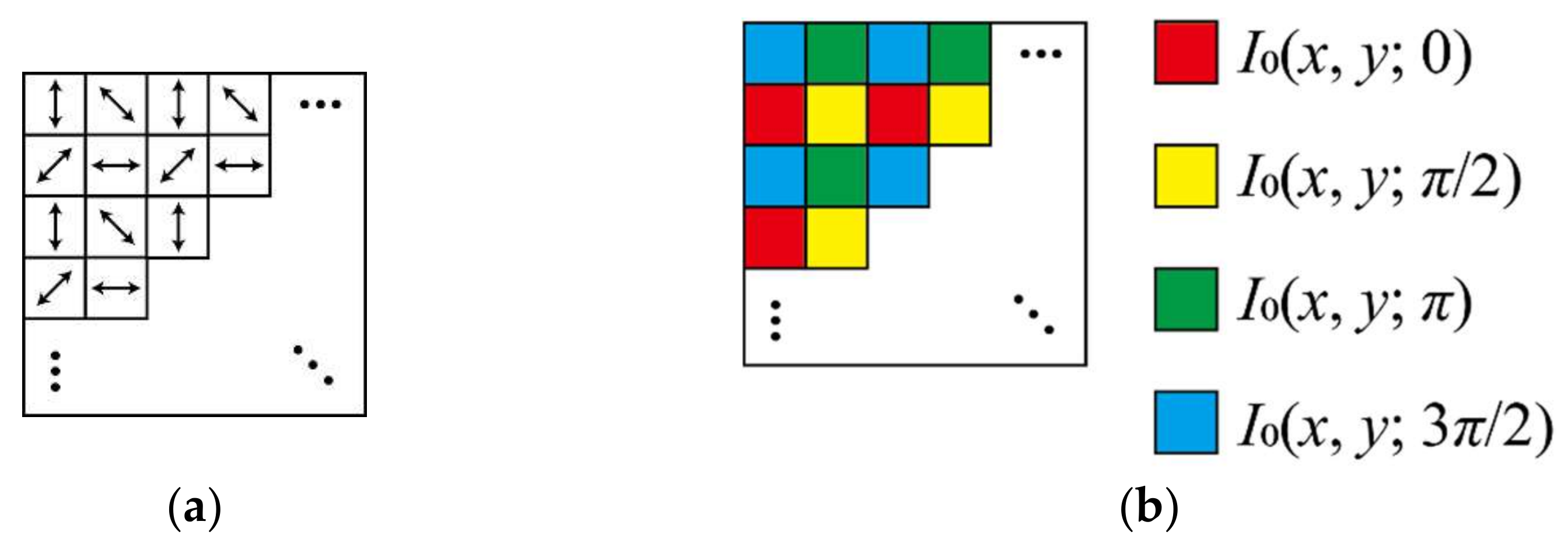
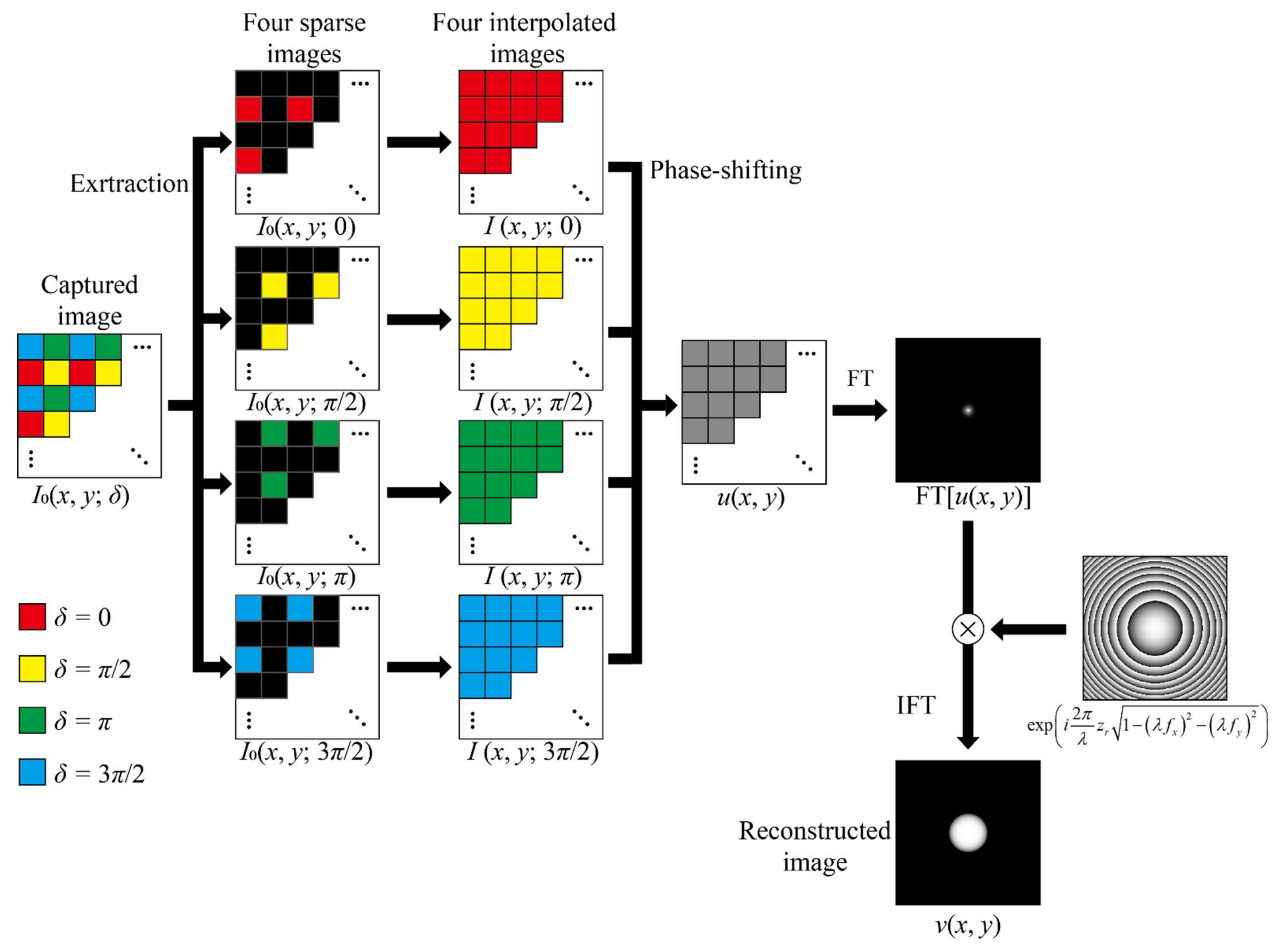
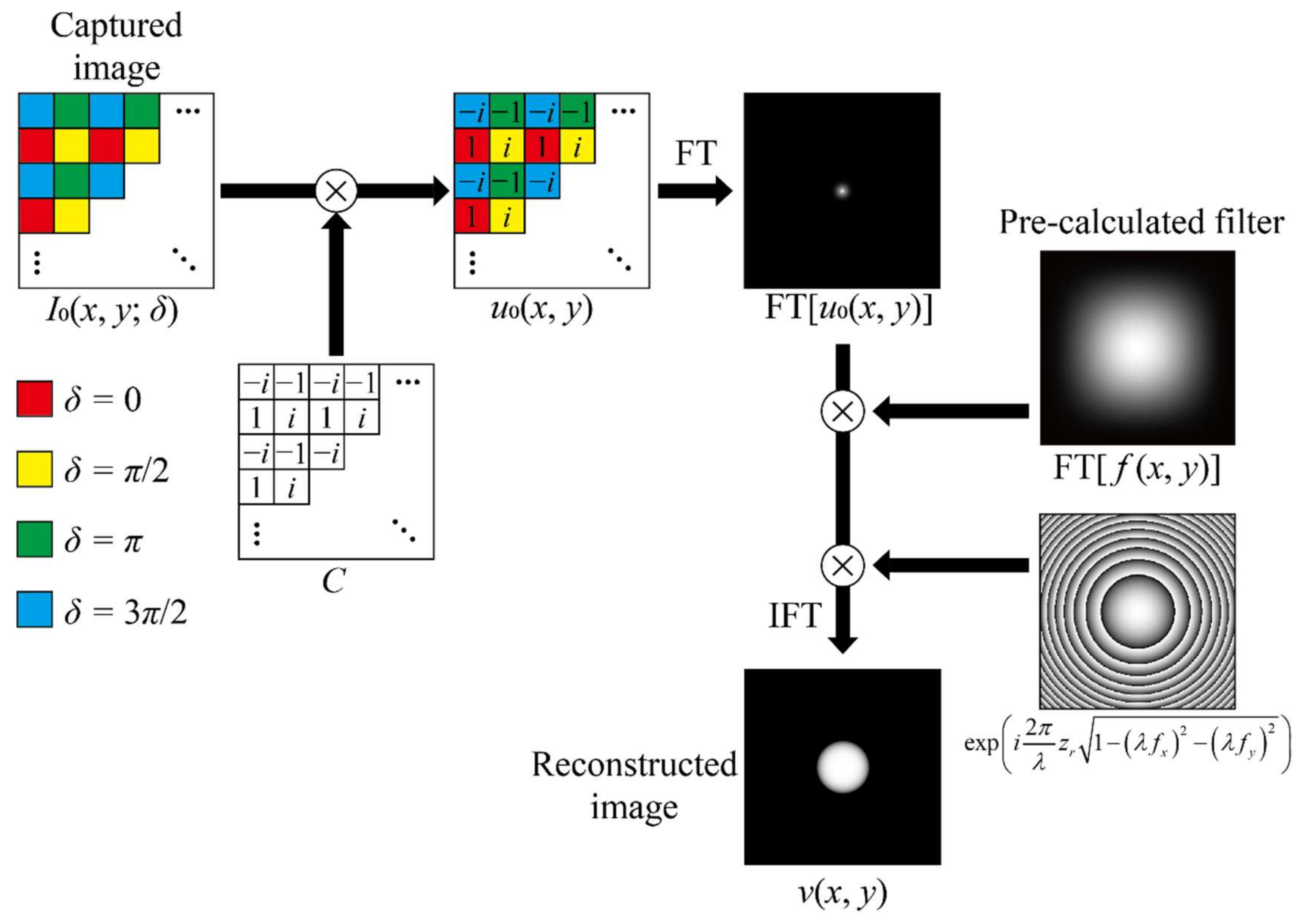
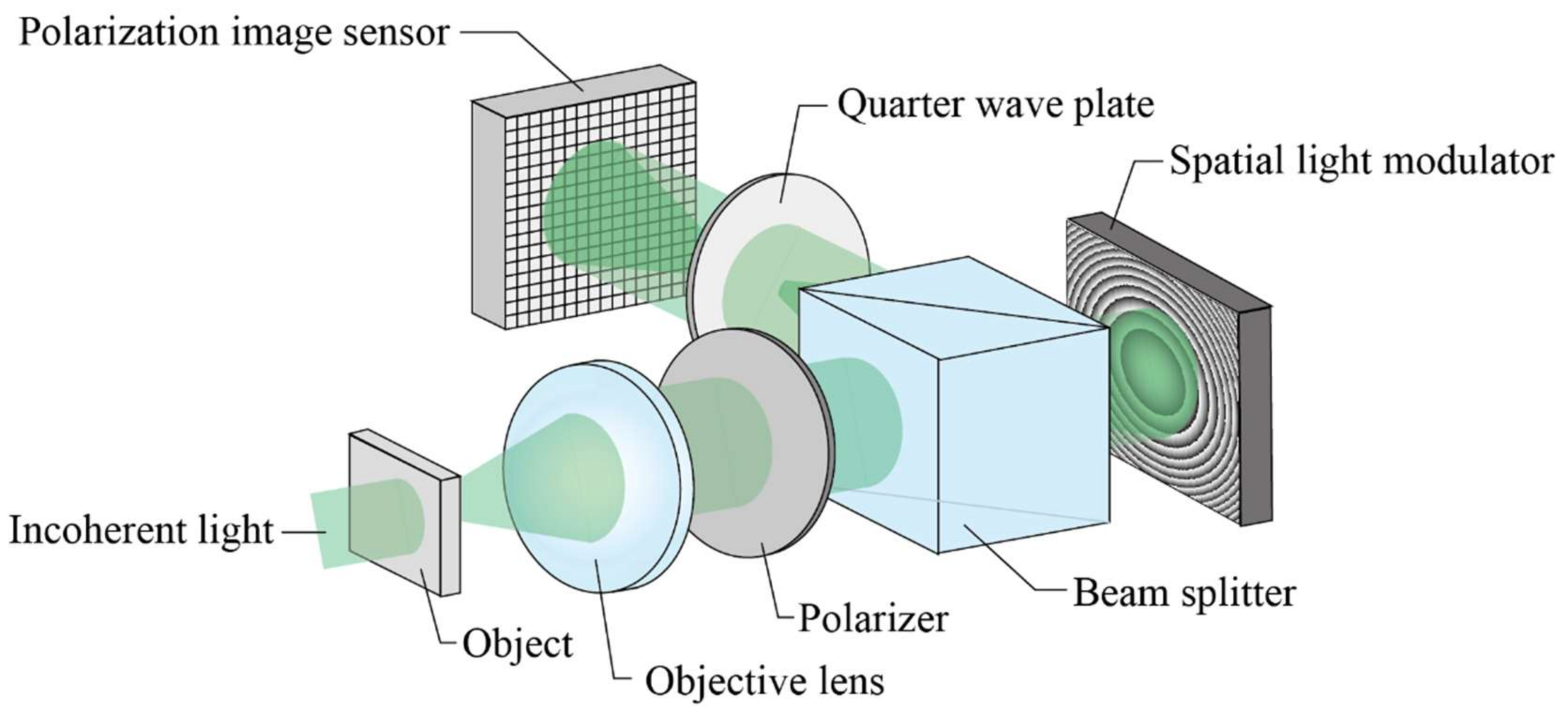
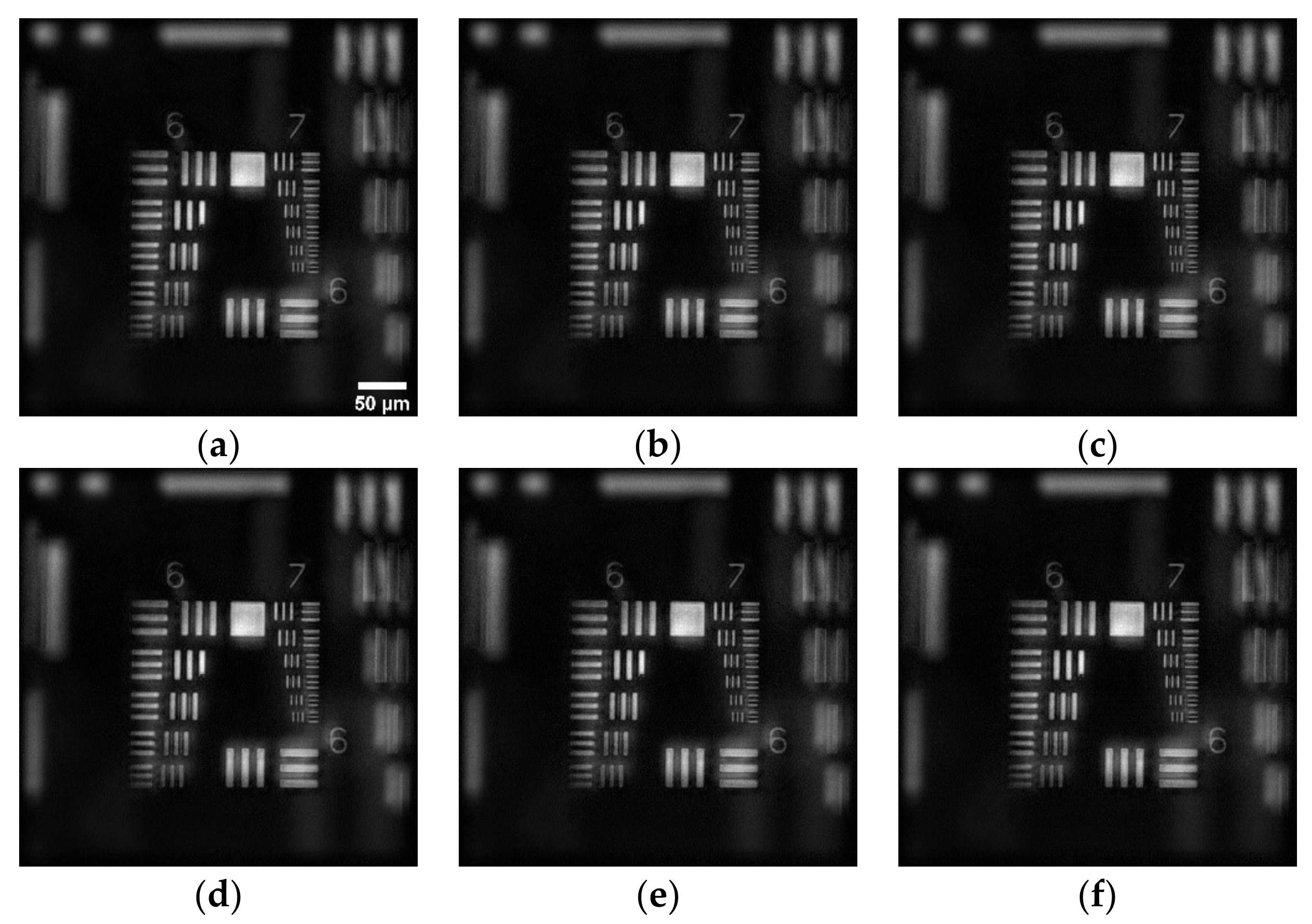
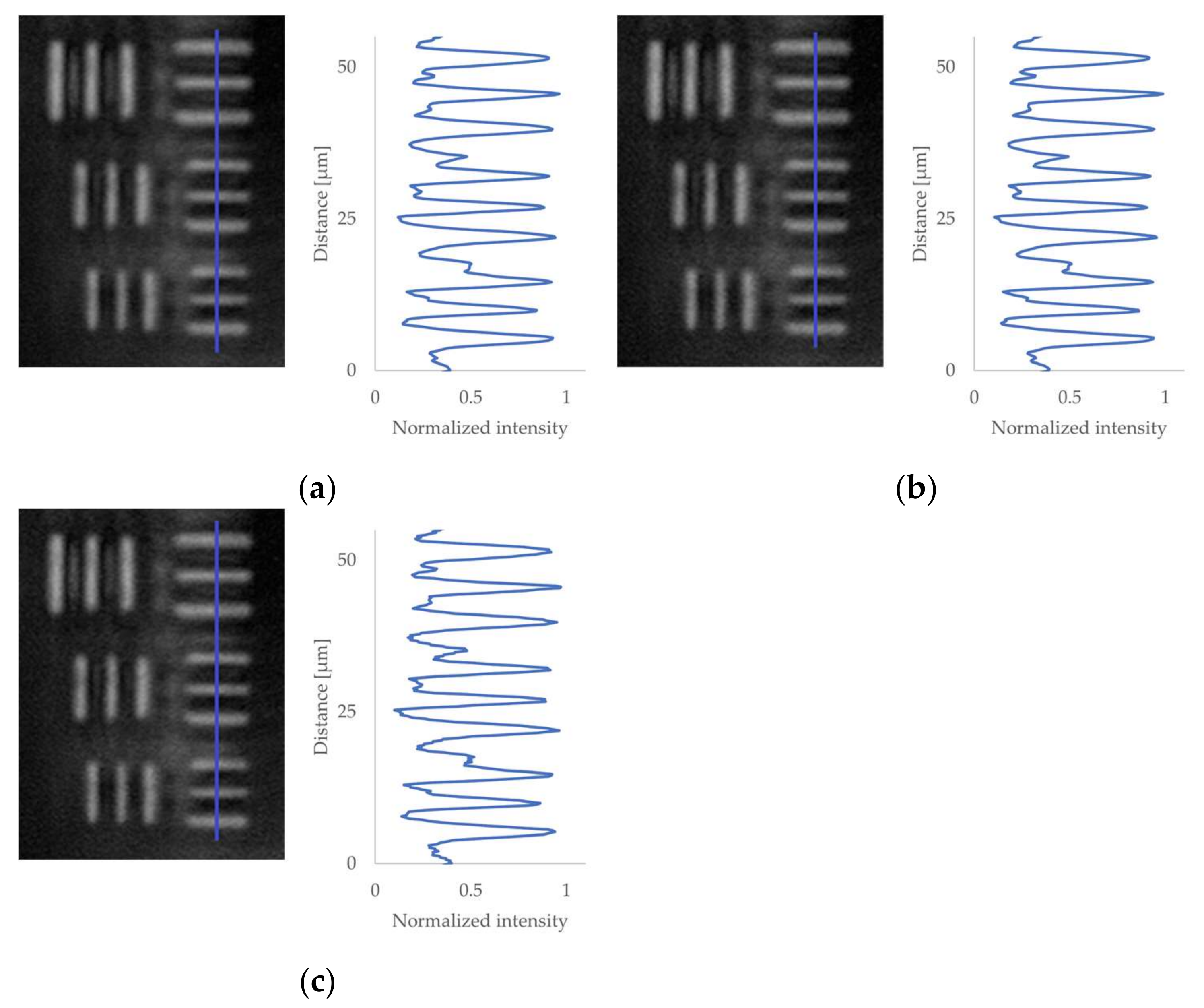
| Bilinear (3 × 3 Kernel) | Bicubic (7 × 7 Kernel) | Lanczos-3 (11 × 11 Kernel) | ||||
|---|---|---|---|---|---|---|
| Conventional [ms] | Proposed [ms] | Conventional [ms] | Proposed [ms] | Conventional [ms] | Proposed [ms] | |
| Object wave generation | 116 ± 5 | 18 ± 1 | 167 ± 8 | 18 ± 1 | 274 ± 13 | 18 ± 1 |
| Diffraction calculation | 345 ± 14 | 398 ± 17 | 350 ± 14 | 399 ± 17 | 349 ± 15 | 395 ± 17 |
| Total | 461 ± 19 | 416 ± 18 | 518 ± 22 | 417 ± 18 | 623 ± 28 | 413 ± 18 |
Publisher’s Note: MDPI stays neutral with regard to jurisdictional claims in published maps and institutional affiliations. |
© 2021 by the authors. Licensee MDPI, Basel, Switzerland. This article is an open access article distributed under the terms and conditions of the Creative Commons Attribution (CC BY) license (https://creativecommons.org/licenses/by/4.0/).
Share and Cite
Tsuruta, M.; Fukuyama, T.; Tahara, T.; Takaki, Y. Fast Image Reconstruction Technique for Parallel Phase-Shifting Digital Holography. Appl. Sci. 2021, 11, 11343. https://doi.org/10.3390/app112311343
Tsuruta M, Fukuyama T, Tahara T, Takaki Y. Fast Image Reconstruction Technique for Parallel Phase-Shifting Digital Holography. Applied Sciences. 2021; 11(23):11343. https://doi.org/10.3390/app112311343
Chicago/Turabian StyleTsuruta, Masahiro, Tomotaka Fukuyama, Tatsuki Tahara, and Yasuhiro Takaki. 2021. "Fast Image Reconstruction Technique for Parallel Phase-Shifting Digital Holography" Applied Sciences 11, no. 23: 11343. https://doi.org/10.3390/app112311343
APA StyleTsuruta, M., Fukuyama, T., Tahara, T., & Takaki, Y. (2021). Fast Image Reconstruction Technique for Parallel Phase-Shifting Digital Holography. Applied Sciences, 11(23), 11343. https://doi.org/10.3390/app112311343






